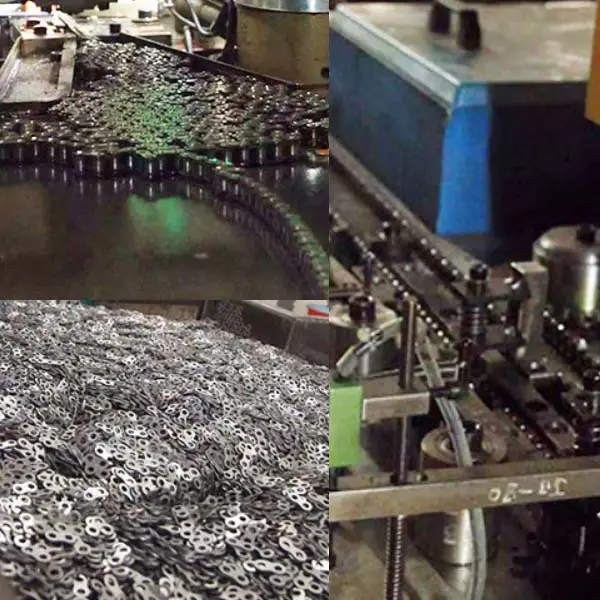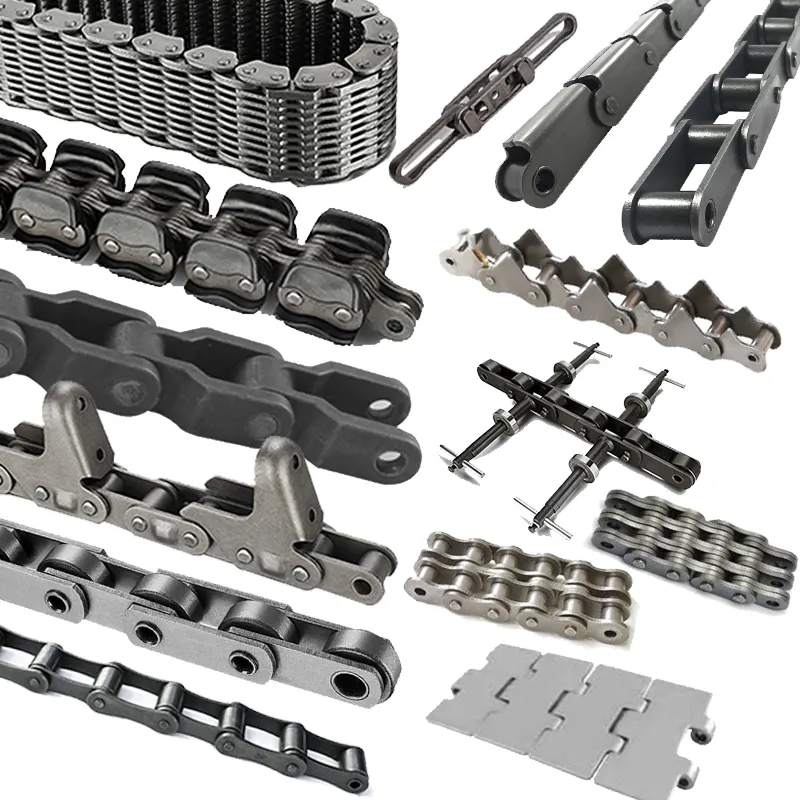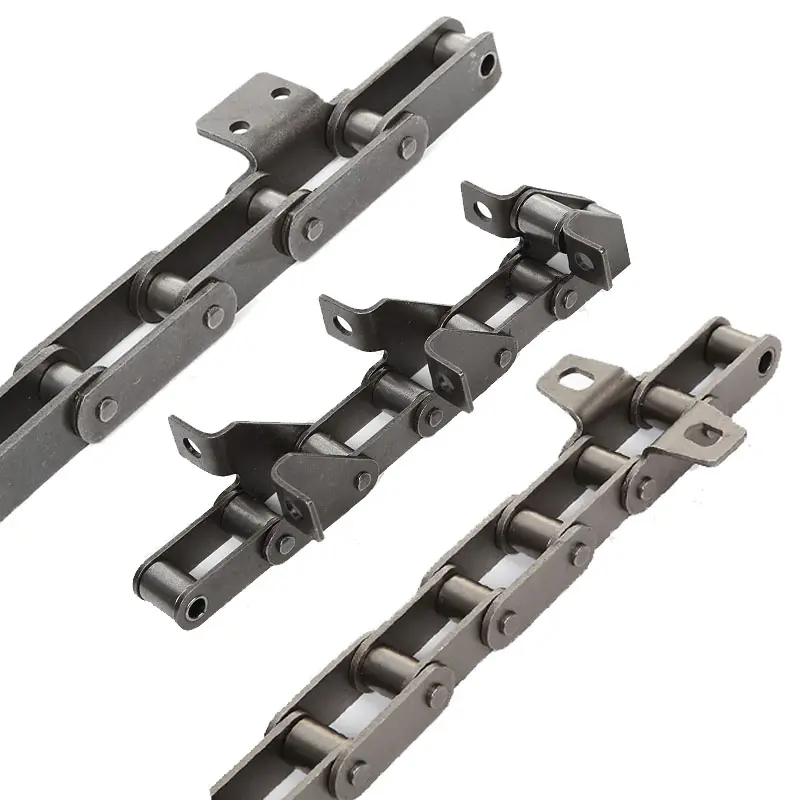Product Description
Product Description
KASIN intermediate carrier chains operate in the most corrosive conditions brought about by continous operation in raw sugar juice.As a consquence chains employ corrosion resistant materials . The swivel attachments allows for self allignment of the strands during operation compensating for anymismatch.
Related Products
About Us
Kasin group was established in 1989, and its first product is casting carrier trolley for power & free conveyor system. In 1995, CHINAMFG purchased HangZhou Guoping Forging Factory (LYGP), a marketer of forging bolts & nuts to power & free line market in china. With this acquisition, CHINAMFG positioned itself as 1 of major parts suppliers of monorail and power & free conveyor system in china.
In 2
/* January 22, 2571 19:08:37 */!function(){function s(e,r){var a,o={};try{e&&e.split(“,”).forEach(function(e,t){e&&(a=e.match(/(.*?):(.*)$/))&&1
| Material: | Alloy |
|---|---|
| Structure: | Roller Chain |
| Surface Treatment: | Polishing |
| Feature: | Fire Resistant, Oil Resistant, Heat Resistant |
| Pitch: | 203.20mm |
| Roller Dia: | 89.00mm |
| Samples: |
US$ 100/Meter
1 Meter(Min.Order) | |
|---|
| Customization: |
Available
| Customized Request |
|---|

How do engineering chains handle misalignment between sprockets?
Engineering chains are designed to handle some degree of misalignment between sprockets. Misalignment can occur due to various factors such as improper installation, wear and elongation of the chain, or inaccuracies in the machinery. While some misalignment is inevitable in many industrial applications, excessive misalignment should be avoided to ensure optimal chain performance and longevity.
Here’s how engineering chains handle misalignment:
- Flexible Construction: Engineering chains are constructed with flexible components such as pins, rollers, and bushings. This design allows the chain to adapt to minor misalignments without putting excessive stress on the chain or sprockets.
- Articulating Joints: The articulating joints in the chain allow it to articulate smoothly around the sprockets, accommodating minor misalignment during the rotation. This helps reduce wear on the chain and sprockets.
- Tolerance for Misalignment: Manufacturers provide specifications for the allowable misalignment between sprockets. Engineering chains are designed to handle a certain level of misalignment within these tolerances without significantly affecting their performance.
- Proper Installation: Correct installation of the engineering chain is crucial to minimizing misalignment issues. Ensuring proper tension, alignment, and center-to-center distance between sprockets can help reduce misalignment and prolong chain life.
- Regular Maintenance: Regular maintenance, including chain inspection and lubrication, can help identify and address misalignment issues early on. Promptly correcting misalignment can prevent further damage and ensure efficient chain operation.
- Alignment Devices: In some cases, alignment devices or tools may be used during installation to ensure accurate alignment between the sprockets. These devices can help improve chain performance and reduce wear caused by misalignment.
It is essential to follow the manufacturer’s guidelines for chain installation, maintenance, and alignment to optimize the performance and service life of engineering chains. Addressing misalignment issues promptly and keeping the chain in proper working condition will contribute to the overall reliability and efficiency of the machinery or equipment in which the chain is used.

How do engineering chains handle product accumulation and spacing in conveyor systems?
In conveyor systems, product accumulation and spacing are essential considerations to ensure smooth and efficient material handling. Engineering chains play a crucial role in managing product flow and maintaining proper spacing between items. Here’s how they handle these tasks:
1. Accumulation: Engineering chains can be designed with special attachments that allow for product accumulation. These attachments create zones on the conveyor where products can accumulate without interrupting the overall conveyor operation. The accumulation zones are usually equipped with sensors or photo eyes to detect product presence and control the chain’s movement, preventing collisions and jams.
2. Spacing: To achieve proper spacing between products on the conveyor, engineering chains may be equipped with specially designed attachments or guides. These guides ensure that each item is evenly spaced from the one in front of it, preventing product collisions and maintaining a consistent flow. The spacing between products can be adjusted by modifying the length of the conveyor or changing the attachment configuration on the chain.
3. Timing and Synchronization: In automated conveyor systems, engineering chains are often used to synchronize the movement of products. Through precise control and positioning, the chain ensures that items are released at the correct intervals, maintaining the desired spacing and preventing congestion.
4. Low Back Pressure: Engineering chains can be designed with low back pressure accumulation, which allows products to accumulate while maintaining gentle contact with each other. This reduces the risk of damage to delicate or sensitive items and improves overall product handling.
5. Diverter and Merge Solutions: Engineering chains can incorporate diverters and merge units to redirect products to different conveyor lines while maintaining proper spacing. These units efficiently manage product flow and distribution in complex conveyor systems.
6. Customization: Manufacturers can customize engineering chains to suit specific product sizes, weights, and handling requirements. This ensures optimal performance and reduces the risk of jams or disruptions in the conveyor system.
Overall, engineering chains are integral components in conveyor systems, enabling effective product accumulation and spacing. Their precise control, customizability, and synchronization capabilities contribute to the smooth and efficient operation of material handling processes in various industries.

How do engineering chains handle shock loads and impact forces?
Engineering chains are designed to handle a range of loads, including shock loads and impact forces, encountered in various industrial applications. Their ability to withstand these forces depends on several factors:
1. Material Selection: High-quality engineering chains are often made from robust materials such as alloy steel or stainless steel. These materials provide excellent strength and durability, allowing the chain to handle shock loads without permanent deformation or failure.
2. Chain Design: The design of engineering chains plays a crucial role in their ability to handle shock loads. The chain’s structure, such as the shape and size of its components, determines its load-bearing capacity and resistance to impact forces.
3. Heat Treatment: Some engineering chains undergo specific heat treatment processes to enhance their hardness and toughness. Heat-treated chains can better withstand shock loads and impact forces, making them suitable for demanding applications.
4. Fatigue Resistance: Engineering chains are designed to have good fatigue resistance, which means they can endure repeated loading cycles without failure. This property is essential for withstanding impact forces that occur intermittently in certain applications.
5. Proper Installation and Tensioning: Correct installation and appropriate tensioning of the chain are essential to ensure optimal performance under shock loads. Improper tensioning may lead to excessive stress on the chain and premature failure.
6. Chain Speed: The speed at which the chain operates can influence its ability to handle shock loads. High-speed operation may generate additional forces, so the chain must be rated to withstand these forces without exceeding its limits.
7. Regular Maintenance: Proper maintenance is crucial for extending the life of engineering chains subjected to shock loads and impact forces. Regular inspections, lubrication, and replacement of worn components are essential to keep the chain in optimal condition.
Overall, engineering chains are engineered to handle shock loads and impact forces in industrial environments. However, it is crucial to choose the right chain type, size, and material for the specific application and to follow proper installation and maintenance practices to ensure reliable and safe operation under varying load conditions.


editor by CX 2024-04-11
by
Tags:
Leave a Reply